Romy Julia Kroppe

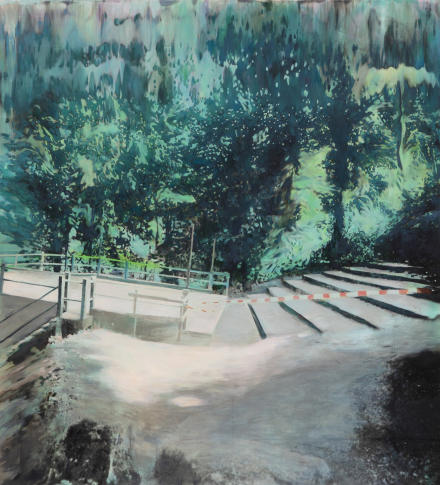
Acryl, Acryl-Transfer auf Papier,
214×235 cm, 2016
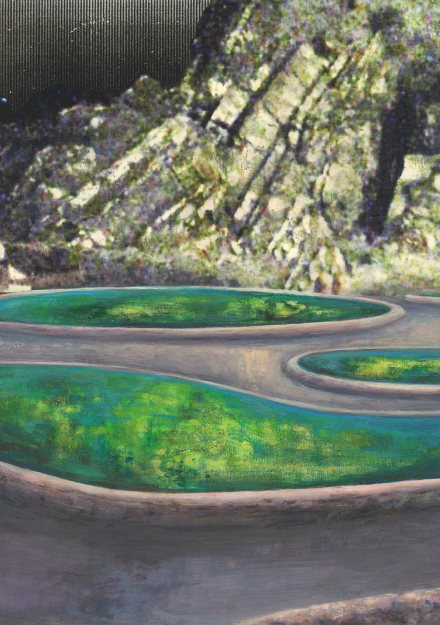
Acryl, Acryl-Transfer auf Papier,
24×30 cm gerahmt, 2020
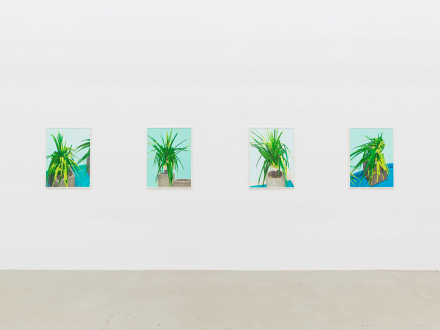
Acryl auf Papier, 60×80 cm, 2019
Die Palme ist eine Pathosformel der Sehnsucht; als Topfpflanze, Fototapete oder Promenadendekoration in Kübeln am Wegesrand. Sie verheißt eine Freiheit, die sie als domestizierte Nutzpflanze in Bananenplantagen ebenso wenig hat wie der Tourist in eingefriedeten Hotelanlagen, SUVs in wilden Gegenden oder hier: im Glaswürfel der Raucherinsel auf der Fähre »Norröna« zwischen den Färöern und Island.
Die dem Wind und Salzwasser, Sonnenlicht und Rauch ausgesetzten Deko-Palmen sind aus Plastik. Mit abblätternden Kunststoffoberflächen, Farbirritationen und verblichenen Flecken gibt ihnen die gnadenlose Witterung eine Art Natürlichkeit zurück. Oder ist dieser Effekt ein kalkulierter? Hat der Hersteller mit den abgeschnittenen Blättern die typischen Spuren der Zimmerpflanzenpflege bewusst mitsimuliert?
more…Marcel Raabe 2020
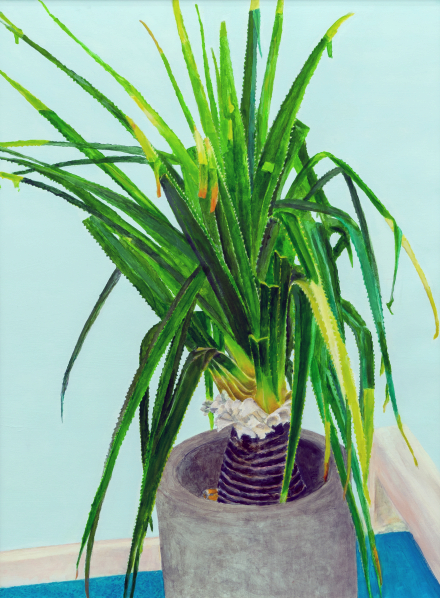
Acryl auf Papier, 60×80 cm, 2019
The palm tree is a pathos formula for desire; as a potted plant, photo wallpaper or promenade decoration in buckets by the wayside. It holds out the promise of a freedom which, as a domesticated useful plant in banana plantations, it does not have any more than the tourist in fenced-in hotel complexes, SUVs in wild areas - or here: in a glass box on the Smokers' Area on the ferry "Norröna" between the Faroe Islands and Iceland.
The deco-palms exposed to wind and salt water, sunlight and smoke are made of plastic. With their flaky plastic surfaces, colour irritations and faded stains, the relentless weathering gives them back a kind of naturalness. Or is this effect a calculated one? Did the manufacturer intentionally use the cut-off leaves to simulate the typical traces of indoor plant care?
more…Marcel Raabe 2020
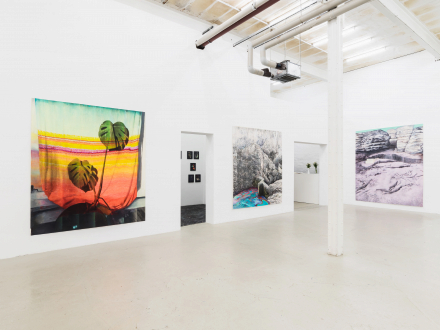
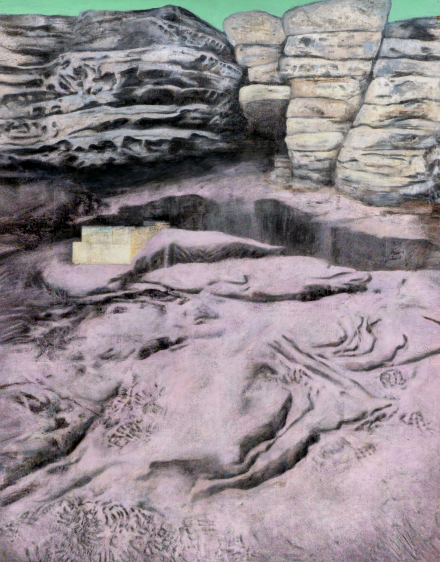
Acryl, Acryl-Transfer auf Papier,
212×270 cm, 2020

Acryl-Transfer auf Papier, 214×235 cm, 2017
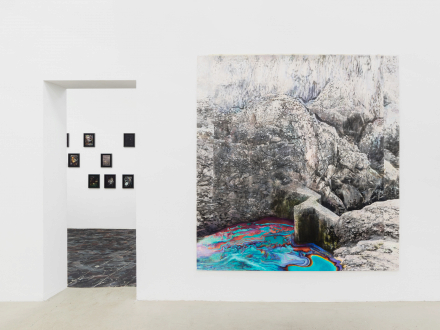
Strand
Acryl, Aquarell, Acryl-Transfer, 17×24 cm,
Serie: 20 Bilder 2017, 10 Bilder 2020
Glanni
Acryl-Transfer auf Papier, 214×231 cm, 2019

Acryl, Aquarell, Acryl-Transfer, 17×24 cm,
Serie: 20 Bilder 2017, 10 Bilder 2020
